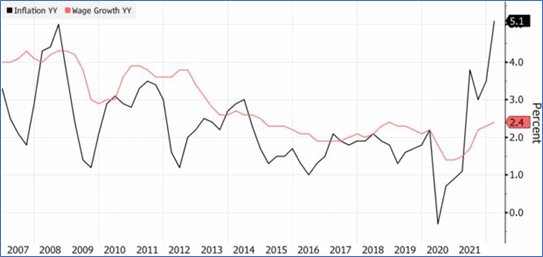Earlier this year we published an article in which we gave you an idea of how the result of the Federal election, which was then four months in the future, could affect your finances.
Now all the votes have been counted and the dust has settled, read about what the actual outcome could mean for the Australian economy and your financial planning.
The election resulted in a big defeat for the Coalition
The consensus from political commentators is that the 2022 Federal election resulted in an overwhelming defeat for Scott Morrison’s Liberal/National Coalition, rather than a sweeping victory for the Labor Party.
The Coalition lost 19 seats in the House of Representatives, their lowest share since 1946.
The nine seats won by the Labor Party give them 77 out of the 151 seats in the House and mean that Anthony Albanese’s government will govern with a slim majority over all other parties.
Apart from it being Labor’s first election victory for 11 years, the most noteworthy story to come out of the election was the stunning success of independent candidates. The so-called “teal coalition” gained a remarkable seven seats, including that of the treasurer, Josh Frydenberg.
The Coalition also lost ground in the Senate, losing four seats – three to the Greens and one to rugby star turned social justice activist, David Pocock.
Leading analysts aren’t anticipating dramatic economic changes
According to leading financial analysts, Fitch Ratings, it’s unlikely that the Labor victory will result in any dramatic change of economic course.
Fitch estimate that that the debt-to-GDP ratio will reach 58% in the current fiscal year ending June 2022. This is a big increase on the 42% ratio in 2019, primarily attributable to the Coalition government’s support for the economy during the Covid-19 pandemic.
Labor have pledged increased spending of just 0.8% of GDP in key areas such as energy investment and childcare. They intend to offset almost two-thirds of this spending with savings.
This doesn’t suggest any big increase in personal taxation, although it’s likely you’ll have a better idea of the government spending plans after their first Budget statement.
Rising inflation is a threat
Before the election, inflation was rising, reaching a 21-year high of 5.1% in the first quarter of the year. Bloomberg report that the new treasurer, Jim Chalmers, is warning of further increases in the coming months.
The fact that external issues – such as increased shipping costs and rising energy prices – are primarily driving rising inflation means that the government and Central Bank are limited in terms of what they can do to counter this.
Increasing interest rates is one accepted method, and they are clearly hoping that the recent increase in the base rate to 0.85% will do the job it’s intended to do. Any further rises will clearly have a big impact on people with substantial borrowing.
Unless your income is increasing at the same rate as inflation, the result is a reduction in the purchasing power of your dollars. It’s clear from the Bloomberg chart below that there is a current mismatch in the rates of inflation and earnings, with inflation currently outstripping wage growth significantly.

Source: ABS, Bloomberg
At times like this, it’s worth looking at your financial plan to see where you could potentially reduce discretionary spending and so reduce the impact of rising prices.
Action on emissions was a crucial election issue
One clear message to come out of the election was growing concern over carbon emissions and global warming.
It’s very likely that the new government will toughen Australia’s carbon emission reduction targets. Just bringing the 2030 target rate in line with other developed economies such as the UK, Canada and the EU is expected to require substantial investment – at least part of which will come from government spending.
In its May outlook statement, the Reserve Bank of Australia predicted robust economic growth of 4.2% in 2022. It’s likely that the government will be hoping that this growth will boost tax receipts and minimise the need for extensive borrowing to fund their “green” expenditure plans.
Changes to superannuation
During the election campaign Labor didn’t commit itself to any big changes to the super system.
However, you should be aware of the following changes, announced by the previous government, which will come into force from the start of the new tax year on 1 July:
- The Superannuation Guarantee (SG) rate will increase from 10.0% to 10.5%.
- The work test will be repealed for those aged 67 to 74 in respect of funds accepting voluntary employer, non-concessional, and salary sacrifice contributions.
- The minimum age for making downsizer contributions will reduce from 65 to 60.
Labor have pledged to reduce the downsizer minimum age to 55 and increase the SG rate to 12% by 2025.
The changes outlined here will help boost the value of your super fund and add a valuable layer of flexibility when it comes to your retirement income.
Get in touch
If you have any queries regarding the effect the Federal election could have on your financial planning, please get in touch with us.

